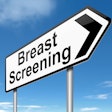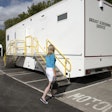Monday, December 1 | 3:30 p.m.-3:40 p.m. | SSE02-04 | Room E450A
Digital breast tomosynthesis (DBT) is rapidly becoming a key part of breast cancer diagnosis and will likely redefine BI-RADS criteria, particularly the BI-RADS 3 category of "probably benign lesions," according to researchers from Yale University.Tomosynthesis has been shown to reduce callbacks, and as the recall rate declines, criteria for BI-RADS 3 lesions may need to be re-evaluated, study presenter Dr. Madhavi Raghu and colleagues wrote. Raghu's group investigated the number, type, and mammographic manifestations of cancer detected with tomosynthesis and categorized as BI-RADS 3.
The study's time frame was January 2012 through June 2013, and it included a total of 5,893 diagnostic mammograms performed with DBT, of which 1,391 (24%) were BI-RADS 3. These 1,391 cases had 1,688 findings, which included calcifications, asymmetries, masses, and architectural distortions.
At the six- to 12-month follow-up interval, 35 studies were reclassified as BI-RADS 4 or 5, which resulted in six cancers: two of these were masses, one was an architectural distortion that yielded a spiculated mass on MR, and three were calcifications that were identified as ductal carcinoma in situ. None of the asymmetries that were recommended for follow-up resulted in cancer.
The malignancy rate of all BI-RADS 3 studies was 0.5%, Raghu's team found, and all of these were early stage and evident as masses or calcifications. With tomosynthesis, some calcifications, masses, and architectural distortions may be appropriate for follow-up, but asymmetries likely do not need to be followed, which represents a redefinition of the BI-RADS 3 category, the group concluded.




















